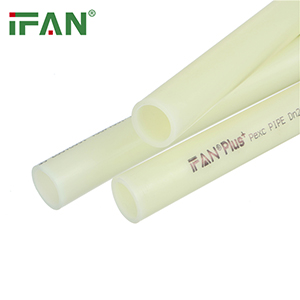IFAN factory 30+ years manufacture experience support color /size customization support free sample.Welcome to consult for catalog and free samples.This is our Facebook Website:www.facebook.com,Click to watch IFAN’s product video.Compared with Tomex products, our IFAN products from quality to price are your best choice, welcome to buy!
PEX (cross-linked polyethylene) underfloor heating systems are renowned for their efficiency and ease of installation, partly due to the variety of pipe connection techniques available. These methods ensure secure joints that maintain integrity over the system’s lifespan. Here’s a detailed exploration of different PEX pipe connection techniques:
1. Crimp Fittings
Crimp fittings are one of the most common and reliable methods for connecting PEX pipes in underfloor heating systems. This technique involves using a crimp tool to squeeze a metal ring around the pipe and fitting, creating a tight seal. The crimping process compresses the PEX pipe against the fitting, preventing leaks and ensuring a robust connection. This method is preferred for its simplicity and effectiveness, making it suitable for both residential and commercial applications.
2. Push-Fit Fittings
Push-fit fittings offer a convenient alternative to crimp fittings, especially in applications where frequent disassembly may be required. These fittings feature a specially designed O-ring and stainless-steel teeth that grip the PEX pipe securely upon insertion. Push-fit connections are tool-free, allowing for quick installation and adjustments. While slightly more expensive than crimp fittings, they provide excellent reliability and are often favored for their ease of use in tight or hard-to-reach spaces.

3. Expansion Fittings
Expansion fittings utilize the expansion properties of PEX pipes to create a strong, leak-free connection. A specialized tool expands the PEX pipe and fitting, allowing them to slide together easily. As the pipe and fitting return to their original size, they form a tight seal without the need for additional materials or fittings. Expansion fittings are highly reliable and minimize the risk of leaks, making them ideal for installations where reliability is paramount.
4. Compression Fittings
Compression fittings involve using a compression nut and ferrule to create a seal between the PEX pipe and fitting. The nut is tightened over the ferrule, compressing it against the pipe and fitting, ensuring a secure joint. This method is versatile and suitable for applications where a strong mechanical connection is required. Compression fittings are particularly useful in areas where high temperatures or mechanical stress might affect other types of connections.
5. SharkBite® and Similar Systems
SharkBite® and similar systems offer another innovative approach to connecting PEX pipes. These systems utilize a push-to-connect mechanism with a specially designed fitting that grips the pipe securely upon insertion. No tools are required for installation, making them ideal for quick repairs or modifications. SharkBite® fittings are compatible with various PEX pipe types and are known for their reliability and ease of use, particularly in residential settings.

Conclusion
In conclusion, the choice of PEX pipe connection technique depends on factors such as installation requirements, budget, and the specific demands of the application. Each method—whether crimp fittings for their reliability, push-fit fittings for their ease of use, or expansion fittings for their leak-free performance—offers distinct advantages tailored to different installation scenarios. By understanding these techniques, installers can ensure efficient and durable connections in PEX underfloor heating systems, enhancing overall performance and longevity.






